Promote visual dispatch and command with distributed image center
- author:
- 2024-06-06 10:43:21
With the acceleration of my country's informatization construction process, various industries are paying increasing attention to visual dispatch command and control. More and more users expect to integrate operation management, production dispatch, security monitoring, emergency command and other systems to achieve the goal. Remote presentation of large screen signals and interaction between various screens, thereby building a cloud management platform for information sharing.
At present, the information data of command and dispatch centers in various industries is ultimately displayed in the form of image information. Therefore, from a usage perspective, the command center can be regarded as an image processing center, which is responsible for the collection, transmission, processing, interaction and presentation of various multimedia signals. Only the processed image information has practical application value.
In order to meet this market demand, Vision Technology has launched the AS-ADS high-definition distributed display control agent solution after years of in-depth exploration of image center application scenarios and research on user usage habits. This solution adopts a decentralized distributed architecture to create a visual collaboration platform. It is a management collaboration system with leading technology, complete functions, stable performance, safe and reliable, convenient operation and convenient expansion. It is also the most extensive command and control system solution in image center scene applications.
- protocol outlines
AS-ADS 高清分布式显控坐席解决方案基于 IP 化、无中心化的设计理念,运用嵌入式架构,为用户提供音频处理、视频拼接处理、视频会议处理、网络传输、环境监控、KVM 坐席协作、可视化控制等多种功能集于一身的现代化、网络化、互联互通的智能化管理平台。
Distributed systems have advantages such as TCP/IP network protocol signal transmission, versatility and flexibility, which expand more possibilities for system construction. Based on the IP architecture, all computers and audio and video equipment can be distributed and organically integrated through the IP network. The system can achieve decentralized deployment, and can also interconnect audio and video signals from the image center lobby and supporting duty rooms, conference rooms, and decision rooms, thereby realizing flexible networking.
The system collects audio, video, USB keyboard and mouse signals through distributed input node equipment and encodes them into the network switching system to achieve flexible call. Then they are decoded and restored into interactive digital signals through distributed output nodes, further achieving large-screen display, agent collaboration and other application-layer functions. The audio and video collection, transmission, control and display aspects of the image center can be easily connected through a digital network for centralized management and control. It has great flexibility and expansibility, and supports multi-point sharing of audio and video signals, Mobile device preview control, audio and video communication and other functions.
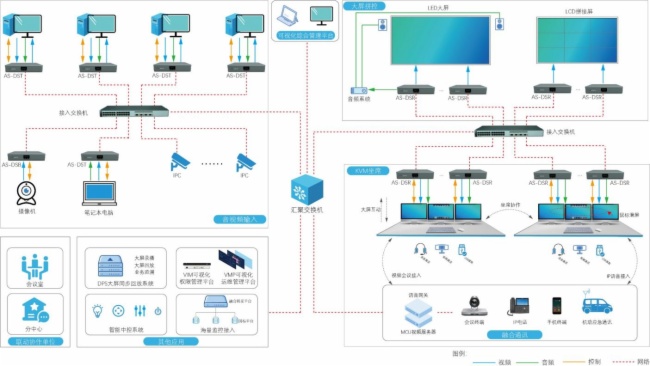
2. System functions
Splice large screen management
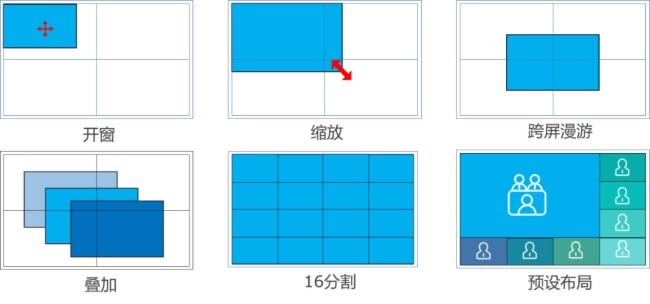
Support large screen grouping and adaptive screen resolution.
Support pre-layout of screen elements.
Support the division of large-screen operable areas, and authorize corresponding large-screen area operation rights to different users.
Support scrolling subtitles. The position, action, scrolling speed, color, font, and font size of the subtitles can be customized.
Support uploading pre-stored ultra-large resolution basemaps to achieve full-screen ultra-high-definition point-to-point display mode.
The large-screen layout supports pre-stored scene modes, one-click calls, and automatic round-robin.
High score synchronization

High-scoring multi-screen graphics card synchronization technology enables multi-source synchronous encoding and synchronous decoding.
Multi-screen graphics cards and multiple interfaces are grouped to collect codes to ensure source-end synchronization.
The decoding end unifies clock decoding to ensure the synchronization of the multi-port graphics card output ultra-high definition images on the entire screen.
Agent collaboration features
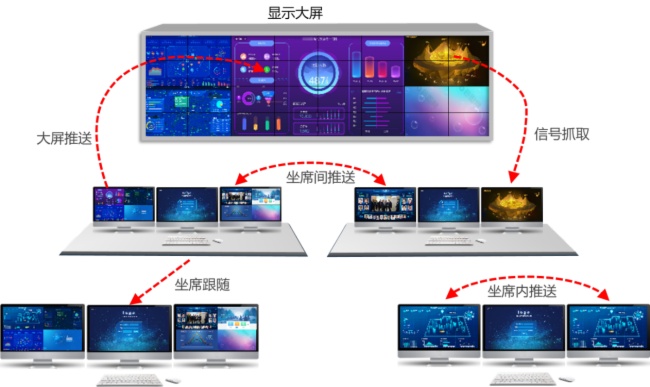
Remote KVM management: realize man-machine separation, multiple computers for one person, sliding mouse, and OSD shortcut keys.
Agent collaboration: Push and grab while sitting, and agents interact with big screen push.
Agent plan: The agent layout is saved as a plan, and the agent plan or single-screen plan can be called with one click.
Call intercom: Agent users point-to-point real-time voice intercom, and one-click dial-up calls from the address book.
Voice transmission through: Agent node MIC sound supports reverse penetration into the signal source computer.
USB: keyboard and mouse KVM application,USB camera access.
Converged communication: Supports communication protocols such as SIP/RTSP to realize agent video calling functions.
Massive monitoring docking
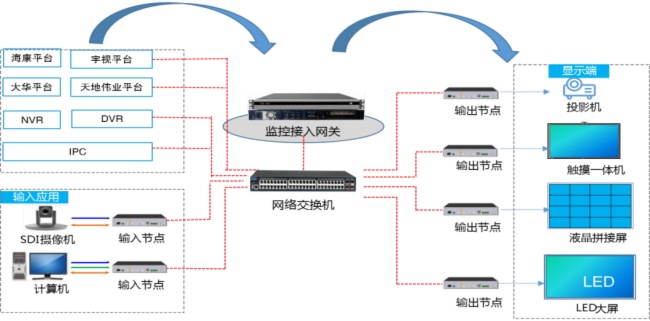
The distributed system can be configured with a multimedia fusion forwarding platform to forward and invoke massive surveillance video streams.
Security platforms of various brands, as well as national standard platforms and monitoring equipment, can be connected to distributed systems through monitoring fusion servers.
Support GB/T-28181, ONVIF, RTSP, SDK and other methods to access, and push video streams to distributed systems through RTSP, RTMP, SDK and other video streams.
Support the docking of security platforms such as Haikang, Dahua, Yushi, and Tiandi Weiye, as well as smart city platforms such as Skynet Engineering, Xueliang City, and Ping 'an City.
Large screen synchronous playback
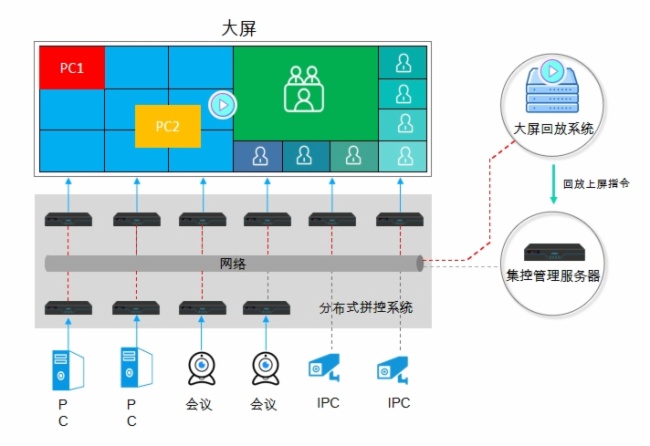
Distributed large-screen synchronous playback system for large-screen traceability and business playback.
Full-screen recording: The recording range covers the entire large screen, and the picture content and picture schedule on the large screen are fully recorded.
Full-process recording: signal window opening, moving, roaming, and zooming actions are recorded throughout.
All-element recording: Record large screen and record subtitles, audio, and system central control instructions.
1:1 restore and playback: restore the full picture, process, and elements of large-screen scheduling, complete business deduction and traceability.
Key event marking: Support key event marking, marking events can quickly jump, making business traceability more convenient.
The system supports mounting multiple screen groups for simultaneous recording and multiple screen groups for group recording.
Distributed central control function
Distributed access: The node comes with its own central control interface, and peripheral equipment connects to the node nearby.
Rich interfaces: Support RS485, RS232, IR, relay, I/O and other control interfaces.
Programmable central control: It can be freely programmed according to user needs to realize different functions.
Visual management: Centralized control of the visualization platform, centralized management of surrounding lighting, curtains, power supplies, air conditioners and other equipment.
Visual management platform
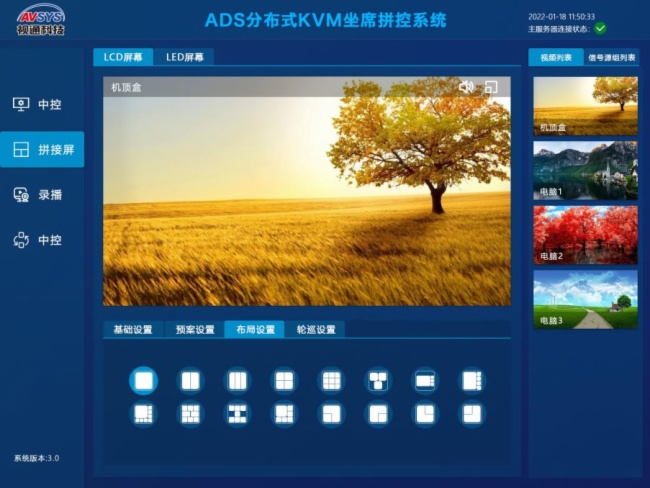
Programmable interface: All modules of the software interface are customized offline and can be flexibly applied for different users and scenarios.
Visual operations: signal preview, large screen playback, plan call, large screen cross-screen window opening/zooming/roaming/window superposition.
Audio management: channel volume, mute adjustment, real-time level tone column display, one-click scene call.
Central environmental control management: Control and read the operating status of surrounding equipment such as lights, screens, power supplies, and curtains.
Multi-screen group management: Unified platform management for multiple groups of large screens.
Visual management: Provide visual management such as WIN/I/OS/Android/Galaxy Kirin/Hongmeng System.
Visual operation and maintenance platform
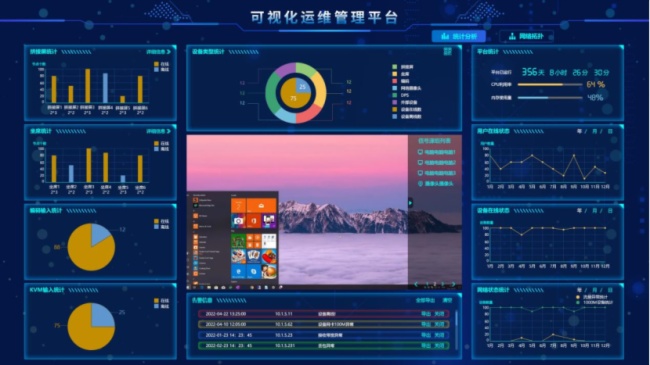
Visual display of system status
Signal screen monitoring preview
Alarm information release
Automatically generate network topology diagram
3. Project cases
Shanghai Data Exchange
Place of use: Top five launches in the country,
TAG:
Guess you want to see it
Popular information
-
On-site environment and frequently asked questions about using distributed image processing systems
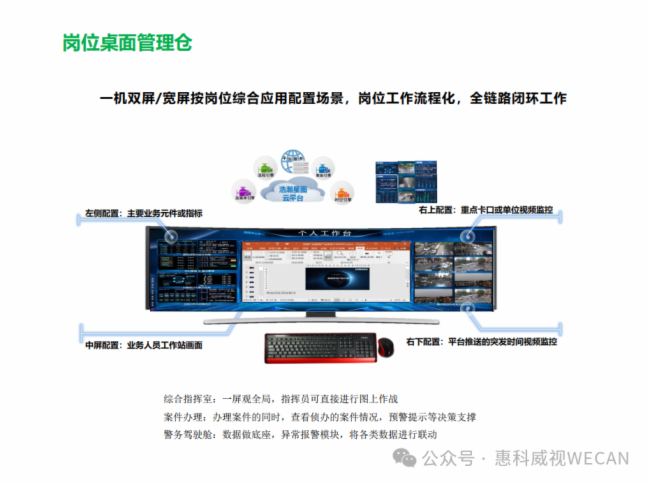
-
What is dynamic subpixel rendering technology
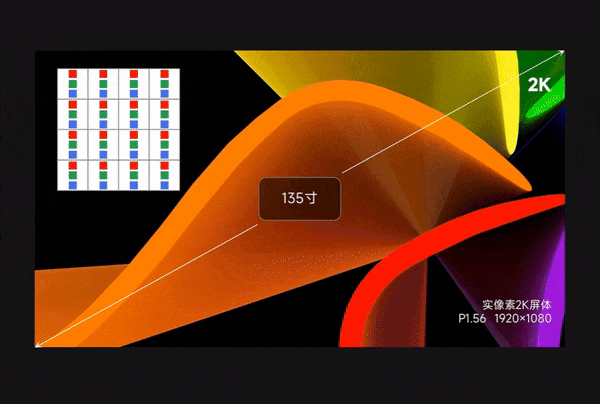
-
Promote visual dispatch and command with distributed image center
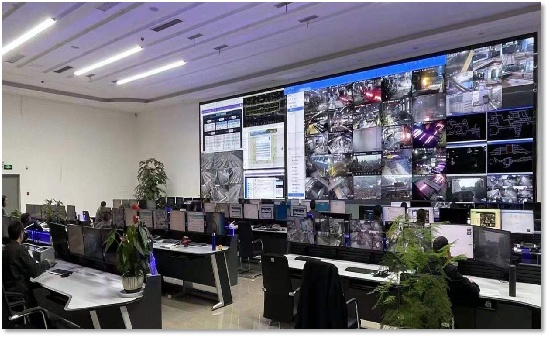
-
Analysis of cutting-edge development and professional application of seamless splicing, point-to-poi

-
Thinking about future breakthroughs in distributed solutions in image processing
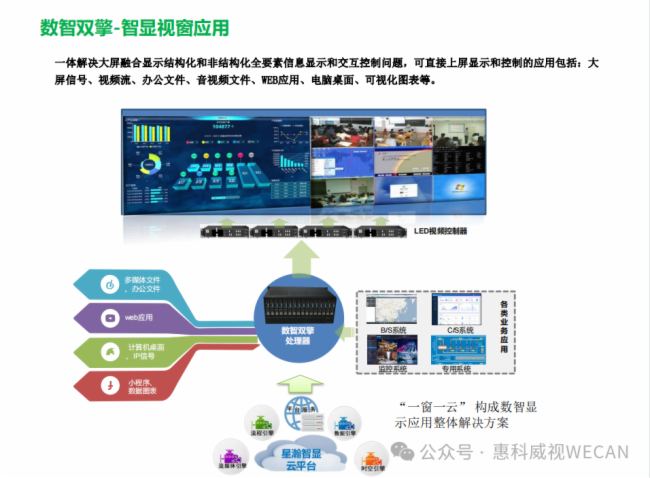
the charts
- Analysis of cutting-edge development and professional application of seamless splicing, point-to-poi
- On-site environment and frequently asked questions about using distributed image processing systems
- Thinking about future breakthroughs in distributed solutions in image processing
- What is dynamic subpixel rendering technology
- Promote visual dispatch and command with distributed image center